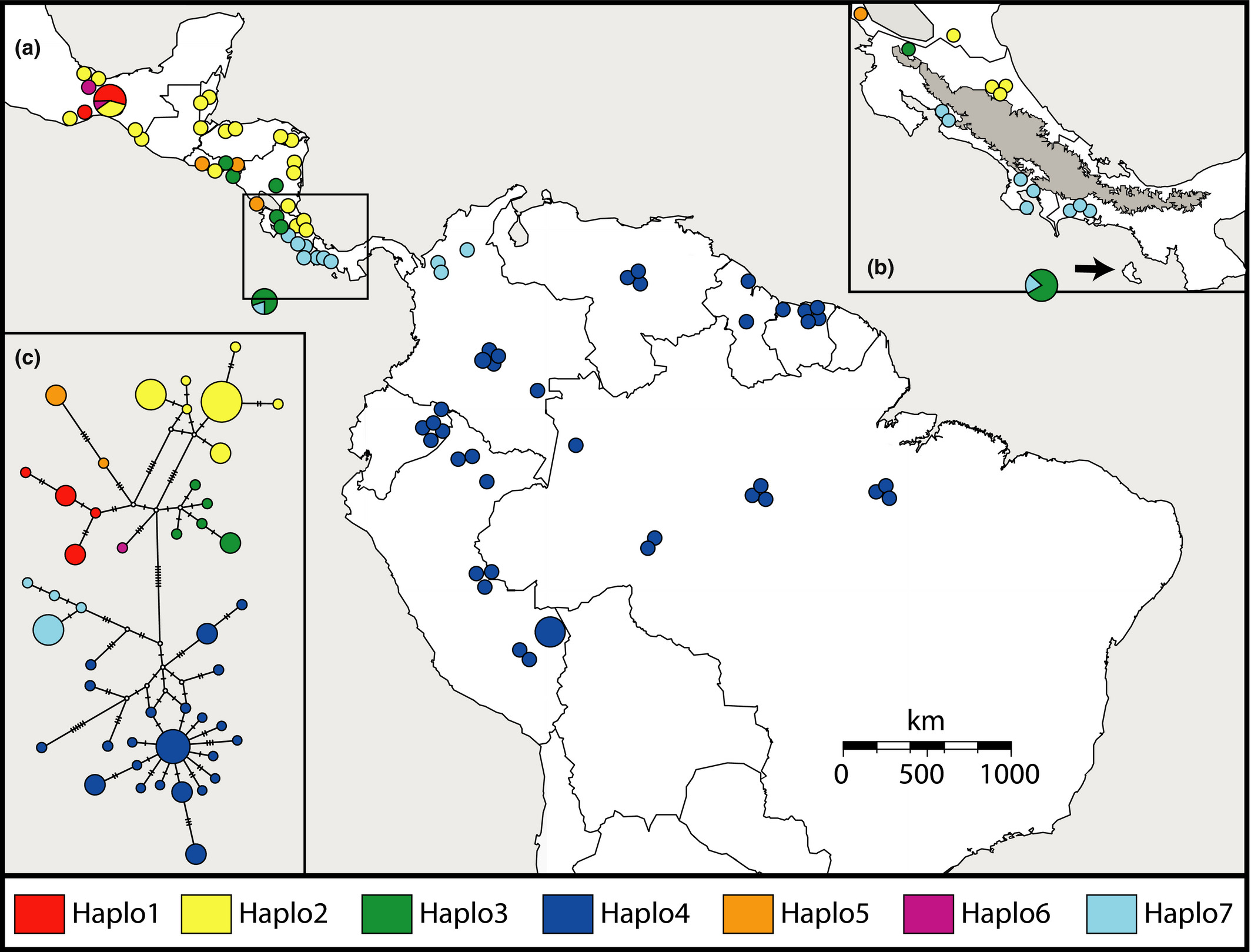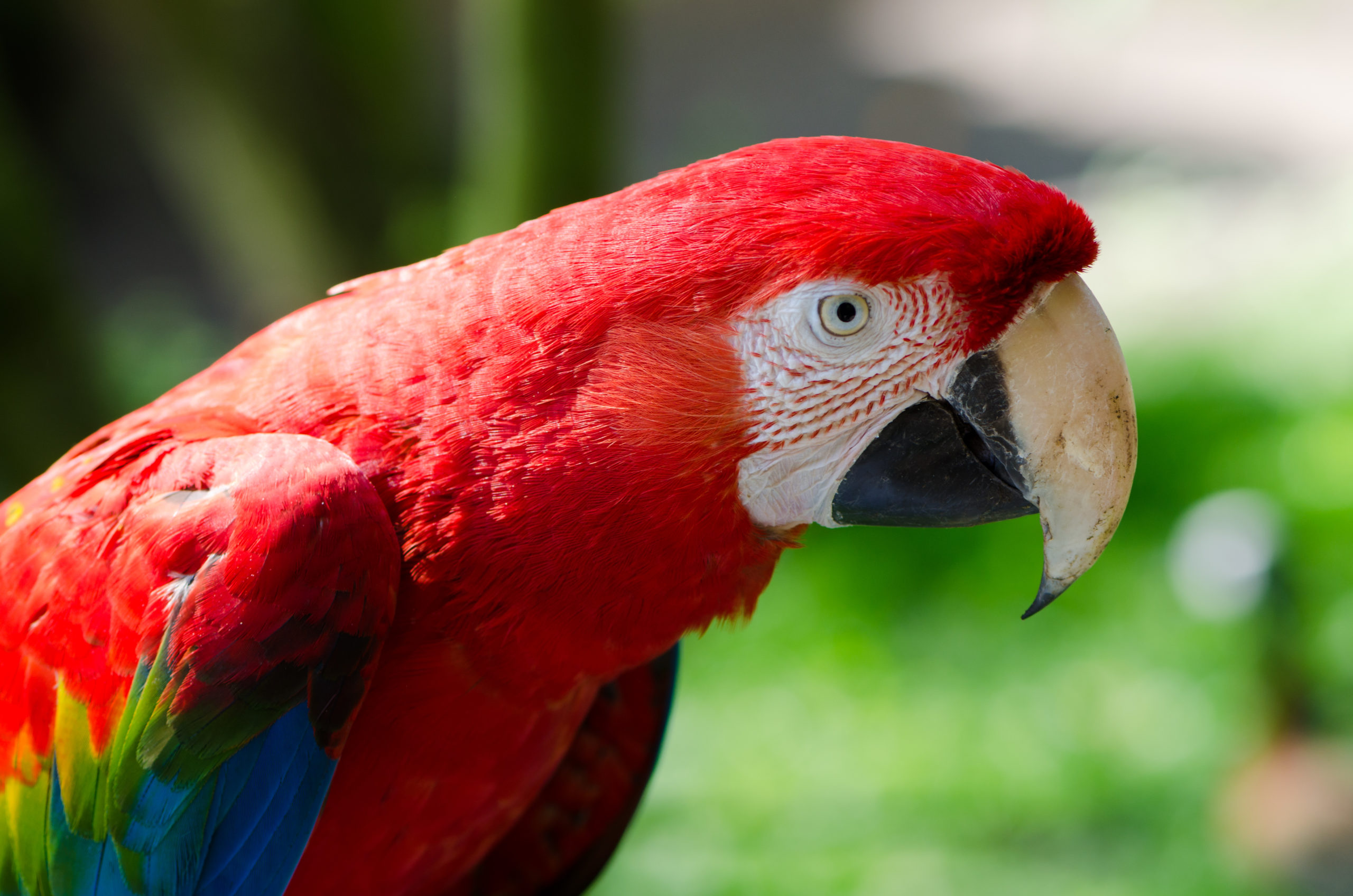LINKED PAPER
Genetic analysis reveals strong phylogeographical divergences within the Scarlet Macaw Ara macao. Schmidt, K. L., Aardema, M. L. & Amato, G. 2019. IBIS. DOI: 10.1111/ibi.12670 VIEW
When Linnaeus described the scarlet macaw (Ara macao) in 1758, he did not recognize any subspecies. In other words, he considered this parrot species monotypic. More than two centuries later, a morphological museum study revealed subtle differences in plumage patterns across the range of the scarlet macaw (Wiedenfeld 1994). Birds found from southern Mexico to central Nicaragua were more robust with a wide band of yellow and little or no green feathers on their wings. Birds that occurred further to the south, however, were smaller and showed a more pronounced green coloration on the wing. These morphological differences led to the description of two subspecies: A. m. cyanoptera in the north and A. m. macao in the south of the distribution. Recently, a study assessed this taxonomic decision with genetic data. How many subspecies of the scarlet macaw are there?
Haplotypes
The researchers obtained genetic material of 100 scarlet macaws and took a closer look at several mitochondrial genes. Specifically, they compared the haplotypes of these birds. A haplotype is a unique sequence of DNA-letters that can be used to determine the genetic relationships between individuals. You can compare haplotypes to surnames: they are passed down generations so people with the same surname likely belong to the same family. Moreover, you can trace the change of surnames through time by comparing their spelling. For instance, the change from SMIT to SMYTH involved two changes: the “mutation” of an I to a Y and the addition of an H. The researchers applied the same logic to the mitochondrial haplotypes to reconstruct the genetic relationships between the macaw populations (DeSalle et al. 2017).

Figure 1 The distribution of mitochondrial haplotypes across the range of the scarlet macaw shows a clear separation between the two subspecies. Moreover, the northern subspecies (cyanoptera) holds more haplotypes compared to the southern subspecies (macao).
Two genetic groups
The genetic analyses uncovered seven distinct haplotypes (mitochondrial surnames, if you will) which could be classified into two main groups. Interestingly, these two groups correspond to the two subspecies described above. The central mountain range in Costa Rica appears to be the main geographical barrier between A. m. cyanoptera and A. m. macao. North of this volcanic landscape, the subspecies cyanoptera can be further divided into five separate clusters. This subdivision is probably the outcome of past ecological changes. Scarlet macaws rely on humid lowland habitats that have expanded and contracted in last few thousand years. These cyclical changes have isolated macaw populations that diverged genetically (i.e. small changes in their mitochondrial surnames). The other subspecies macao – which occurs south of the Costa Rican mountains – was affected less by past ecological changes: here, there are only two distinct clusters. These populations probably persisted in a mosaic of tropical wet forests in South America (Haffer 2008).
Least concern?
The findings of this study have important implications for the conservation of the scarlet macaw. At the moment, this parrot species is considered of ‘Least Concern’ by the IUCN. Splitting the scarlet macaw into two subspecies or conservation units changes the situation (Moritz 1994, Mace 2004). On the one hand, populations of the southern subspecies (A. m. macao) seem to be stable and can probably still be considered of ‘Least Concern’. On the other hand, the northern subspecies (A. m. cyanoptera) is threatened by habitat loss and nest poaching for the pet trade. The genetically and geographically fragmented populations of about 4000 individuals should be uplisted to a ‘Vulnerable’ status.
References
DeSalle, R., Schierwater, B. & Hadrys, H. (2017). MtDNA: the small workhorse of evolutionary studies. Frontiers in Bioscience 22: 873– 887. VIEW
Haffer, J. (2008). Hypotheses to explain the origin of species in Amazonia. Brazilian Journal of Biology 68: 917– 947. VIEW
Mace, G.M. (2004). The role of taxonomy in species conservation. Philosophical Transactions of the Royal Society B: Biological Science 359: 711– 719. VIEW
Moritz, C. (1994). Defining ‘evolutionary significant units’ for conservation. Trends Ecology & Evolution 9: 373– 375. VIEW
Wiedenfeld, D.A. (1994). A new subspecies of Scarlet Macaw and its status and conservation. Ornitologia Neotropical 5: 99– 104. VIEW
Image credits
Featured image: Scarlet Macaw Ara macao | Tuxyso| CC BY-SA 3.0 Wikimedia Commons




